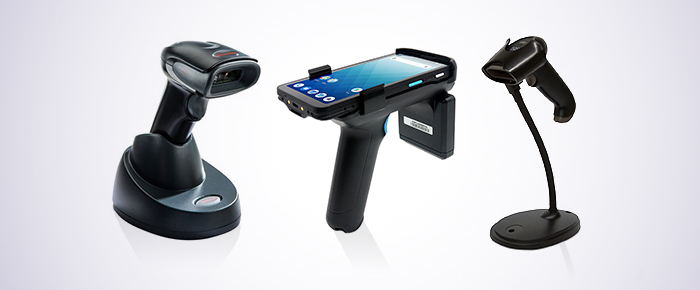
Various issues can occur when scanning barcodes in the lab, from obtaining inaccurate scans to simply being unable to turn on your device. Here are a variety of quick tips that will help troubleshoot common barcode scanner problems, helping you resolve issues without needing a lengthy call to customer service.
Inspect the barcodes
One of the primary issues with scanning barcodes in the lab resides not with the scanner at all but with the printout and/or the type of ink used. Using a thermal-transfer printer will help alleviate issues with scratching and smudging of barcodes and provide resistance against multiple environmental stresses, such as extreme temperatures and chemical exposure. A direct thermal printer is a viable, cheaper option if you require crisp barcodes and do not encounter harsh chemicals or extreme heat.
Barcode labels can also be provided pre-printed with the barcodes graded to ensure they meet stringent scanning requirements. Using a system like the TruCheck Omni™ barcode system, barcode parameters can be verified, reflecting the quality of the barcode design and printout.
If you are unsure, it can be worthwhile to check the manual and ensure that the barcodes you are trying to read are supported by your scanner. There are a host of different kinds of 1D and 2D barcodes, some of which may not be readable by the scanner. Even if the scanner supports the barcode, it’s also possible that the printed size is either too large or too small to be read properly, so verify that the size range matches what is listed in the manual.
Lastly, check that the proper maintenance has been performed on your printer. Cleaning the printer and verifying that ink levels are not too low is important regardless of the printing method currently being used, in addition to optimizing print speeds and label templates.
Check the power source
Ensure the scanner has sufficient battery if it is cordless; otherwise, check that the power source works, including verifying the electricity in the outlet to which it’s connected. The cord and wires can wear down over time, so be sure to also look for breaks.
Clean the lens
A smudged lens can be an easy fix if your barcodes aren’t reading correctly. Like on DVDs, smudging can impede the flow of light to the scanner, causing it to scatter improperly. Always have glass cleaner handy with a microfiber cloth to wash away any dust or fingerprints that may have accumulated on the lens.
Update drivers and firmware
As with other hardware in the lab, scanner software should be kept up-to-date. While the scanner can work without software updates, additional fixes are often added to new updates, which may solve potential issues with the scanner. That’s why it’s always worth keeping drivers and firmware updated to their most recent versions.
Adjust distance, angle, & lighting
For barcode scanners, setup is everything. For fixed scanners, testing scanning conditions during installation is essential to ensure you have the proper distance, angle, and lighting to read your barcodes consistently. Handheld scanners provide more flexibility but often require experience to identify adequate distance and angles when scanning.
LabTAG by GA International is a leading manufacturer of high-performance specialty labels and a supplier of identification solutions used in research and medical labs as well as healthcare institutions.



